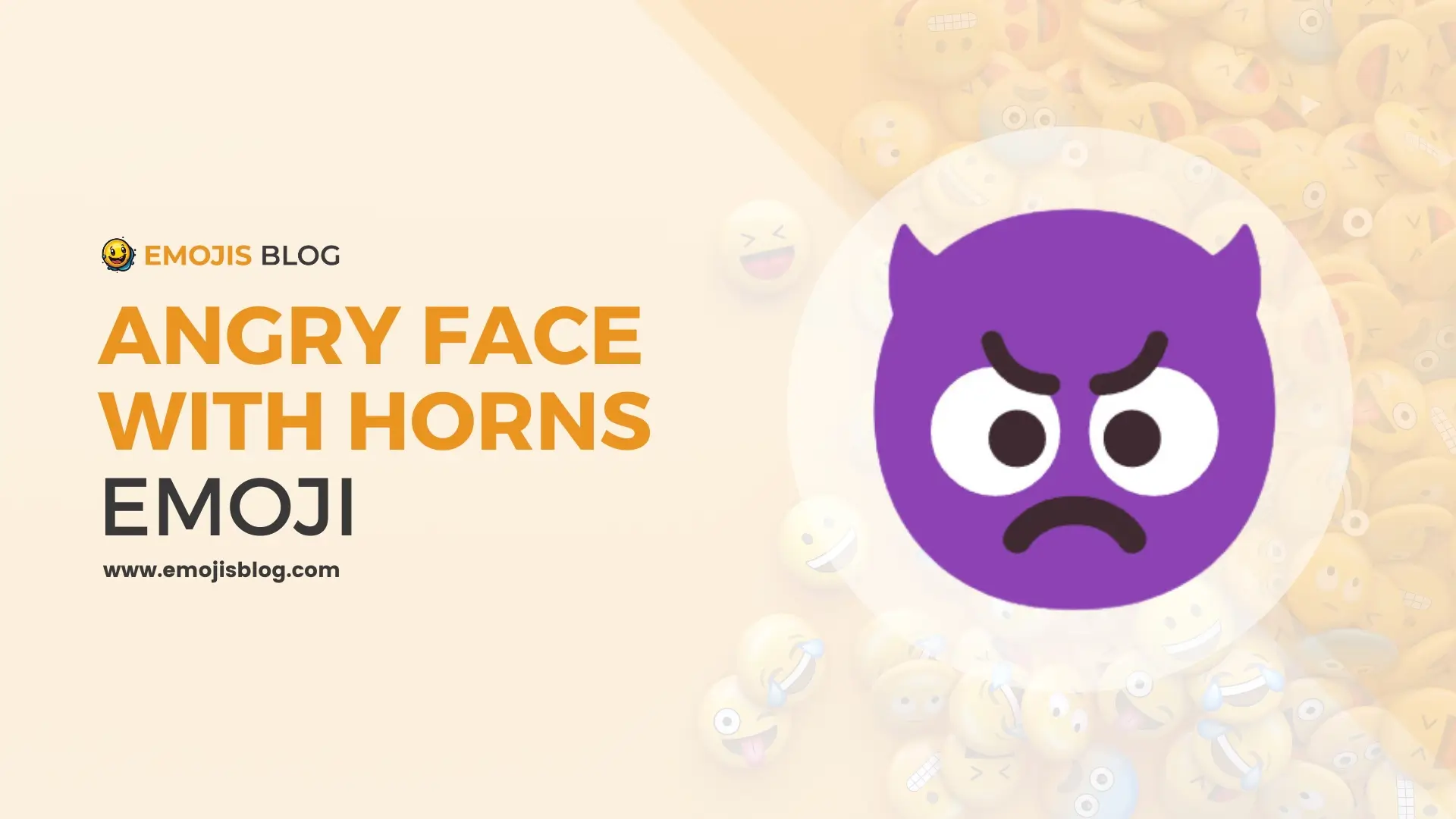What Does The Angry Face With Horns Emoji Mean 👿
👿
What’s Angry Face With Horns Emoji 👿?
The 👿 emoji, known as the Angry Face with Horns, is a digital icon that visually conveys a range of emotions from anger and frustration to mischief and malevolence, often with a playful or exaggerated tone. Characterized by its purple face, furrowed brows, frowning mouth, and distinctive horns, this emoji draws on traditional depictions of devils or demons to express feelings or actions that are naughty, evil, or simply in bad spirits. Its usage varies across different contexts and cultures, serving as a versatile tool in digital communication to add emotional depth or thematic flair to messages, especially in situations that call for a dramatic or humorous touch.
Technical Information
| Attribute | Information |
|---|---|
| Emoji | 👿 |
| Name | Angry Face with Horns |
| Unicode Version | Unicode 6.0 (2010) |
| Category | Smileys & Emotion |
| Subcategory | Face Negative |
| Codepoints | U+1F47F |
| Shortcode | :imp: (GitHub, Slack, etc.) |
| Keywords | Face, Horns, Devil, Angry, Purple, Malevolent |
| Description | A face that is angry and mean, with horns, typically depicted in purple, representing a devilish or demonic expression. |
| Platform Variations | Appearance varies across platforms such as Apple, Google, Microsoft, etc., with differences in style but generally maintaining the same emotional expressions. |
Understanding the 👿 Emoji: Angry Face with Horns
The 👿 emoji, commonly referred to as the Angry Face with Horns, is a graphical representation that combines elements of anger, mischief, and malevolence. This emoji is part of the Unicode Standard, which means it is universally recognized across different platforms and devices. Its depiction varies slightly among platforms, but it consistently features a purple face with furrowed eyebrows, a frowning mouth, and, most notably, two horns protruding from the top of its head. The inclusion of horns suggests a devilish or demonic character, often used to convey feelings of frustration, anger, or evil intentions in a somewhat playful or exaggerated manner.
Symbolism and Usage
The Angry Face with Horns emoji is rich in symbolism. It draws from traditional depictions of demons or devils in folklore and mythology, where such creatures are often portrayed with horns, symbolizing their malevolent nature. In the context of emoji communication, however, the meaning is usually less severe. Here are some of the primary ways this emoji is used:
- Expressing Anger or Frustration: It’s a visual way to show that someone is feeling angry, annoyed, or upset about something, often in a manner that is not entirely serious.
- Conveying Mischief or Naughty Behavior: The emoji can be used to suggest playful misbehavior or naughtiness, akin to saying, “I’m up to no good.”
- Representing Evil or Malevolent Intentions: In a more dramatic sense, it can be used to depict evil thoughts or actions, often in jest or as part of storytelling.
- Halloween and Thematic Usage: Around Halloween, or when discussing topics related to horror, fantasy, or the supernatural, this emoji is frequently employed for thematic emphasis.
Cultural Interpretations
Culturally, the interpretation of the 👿 emoji can vary. In Western cultures, the imagery of devils and demons is commonly associated with evil, making this emoji a straightforward choice for expressing negative emotions or intentions. In other cultures, the symbolism might be interpreted differently, depending on local folklore and traditions related to spirits or mythical creatures.
Platform Variations
The appearance of the 👿 emoji can differ across platforms. For example, Apple’s version might have a more detailed, almost 3D look, while Google’s version is flatter and more cartoonish. Despite these visual differences, the core meaning remains consistent across platforms.
Conclusion
The Angry Face with Horns emoji is a versatile tool in digital communication, allowing users to express a range of emotions and intentions, from anger and frustration to mischief and malevolence. Its use is often context-dependent, with meanings that can vary from playful to more serious tones. As with all emoji, understanding the intended tone can depend on the relationship between the sender and receiver, as well as the specific context in which it is used.

